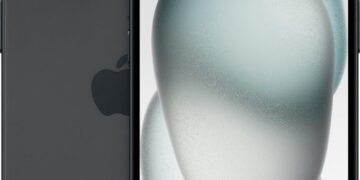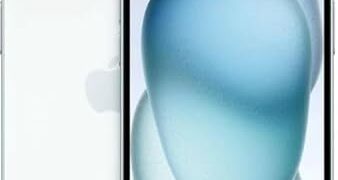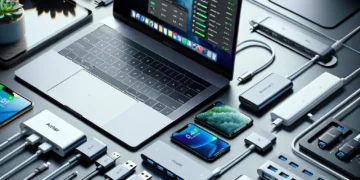Get the latest information on Apple’s upcoming iOS 17.1 update, set to release by October 24. Find out how it addresses radiation levels, disables off-body detection, and introduces new features like Apple Music favorites and AirDrop over the internet.
Apple has announced that it will be releasing the iOS 17.1 update by October 24, according to French regulatory group ANFR. The update is in response to an order from France to address radiation levels in the iPhone 12 and bring the devices in compliance with European electromagnetic radiation standards. In addition to addressing the radiation levels, the update will disable the off-body detection mechanism, which increases transmit power for better cellular performance when the phone is not held on the body. However, this may result in lower cellular performance in areas with low signal coverage in France. Along with these changes, the iOS 17.1 update will introduce new features such as an Apple Music favorites system, support for AirDrop over the internet, and new options in the Wallet app.
Release Date of iOS 17.1 Update
Apple’s highly-anticipated iOS 17.1 update is set to be released to the public by October 24, according to the French regulatory group ANFR. This news comes as a relief to iPhone 12 users who have been eagerly awaiting the update to address radiation levels in their devices.
Reason for iOS 17.1 Update
The primary purpose of the iOS 17.1 update is to tackle the issue of radiation levels in the iPhone 12. This issue arose after France ordered Apple to halt the sale of iPhone 12 models. The French authorities demanded that Apple bring their devices into compliance with European electromagnetic radiation standards.
Order from France
France’s order to stop the sale of iPhone 12 models and ensure compliance with electromagnetic radiation standards had a significant impact on Apple’s plans. In response to this order, Apple worked diligently to develop the iOS 17.1 update, which would address the radiation issue and allow them to resume selling their devices in France.
Disabling Off-Body Detection Mechanism
One of the notable changes in the iOS 17.1 update is the disabling of the off-body detection mechanism in the iPhone 12. This feature, which allows the phone to increase transmit power when not held on the body, was designed to improve cellular performance. However, in order to comply with the radiation standards set by France, Apple has decided to disable this mechanism.
Impact on Cellular Performance
Following the iOS 17.1 update, iPhone 12 models in France may experience lower cellular performance in areas with low signal coverage. This is a result of the disabled off-body detection mechanism, which previously allowed for increased transmit power in such scenarios. While this may be a drawback for some users, it is a necessary step to ensure compliance with the radiation standards imposed by the French authorities.
Safety of iPhone 12
Apple has asserted that the iPhone 12 is safe to use and always has been. While the iOS 17.1 update may bring some changes to the off-body detection mechanism and cellular performance, Apple ensures that these modifications are solely aimed at meeting the radiation standards mandated by France. Users can rest assured that their iPhone 12 devices are safe for use.
Additional Changes in iOS 17.1
In addition to addressing the radiation issue, the iOS 17.1 update introduces several other changes and features. One notable addition is the Apple Music favorites system, which allows users to easily access and organize their favorite songs and playlists. This enhancement enhances the overall music experience for iPhone 12 users.
Another notable change is the support for AirDrop over the internet. This feature enables users to share files and documents seamlessly even when they are not connected to the same Wi-Fi network. It enhances convenience and expands the capabilities of AirDrop, making it a more versatile tool for iPhone 12 users.
The iOS 17.1 update also brings new options to the Wallet app. Users now have the ability to view their bank and card balances directly within the app, providing a more comprehensive overview of their financial information. This enhancement streamlines the user experience and eliminates the need for additional third-party apps to access this information.
Furthermore, changes have been made to the iPhone 15 Pro Action Button. These modifications aim to improve the functionality and ease of use of the Action Button, providing a better overall user experience for iPhone 12 users.
Evidence of Off-Body Detection’s Effectiveness
Apple has conducted thorough testing and verification internationally to confirm that the off-body detection mechanism in the iPhone 12 is effective in complying with Specific Absorption Rate (SAR) requirements. While France ordered the disabling of this feature, it is important to note that Apple has thoroughly tested it and deemed it safe for use. Apple’s decision to disable the feature is a result of their commitment to meeting the specific radiation standards set by France.
Impact on iPhone 12 Usage
Following the iOS 17.1 update, iPhone 12 models in France will no longer increase transmit power when the off-body state is detected. As a result, there may be a decrease in cellular performance in areas with low signal coverage. This is a trade-off that Apple had to make in order to ensure compliance with the radiation standards imposed by France. It is important for users to be aware of this change and understand that it is a necessary step to meet regulatory requirements.
Full List of iOS 17.1 Features
The iOS 17.1 update brings a comprehensive range of new features and changes to the operating system. In addition to addressing the radiation levels in the iPhone 12 and the disabling of the off-body detection mechanism, this update introduces several other enhancements. A full list of these features can be found in the iOS 17.1 features guide. Users are encouraged to explore this guide to gain a better understanding of the changes brought about by the update and how they can benefit from them.










![Apple Watch SE (2nd Gen) [GPS 40mm] Smartwatch with Starlight Aluminum Case with Starlight Sport Band S/M. Fitness & Sleep Tracker, Crash Detection, Heart Rate Monitor](https://www.tech-bit.com/wp-content/uploads/2024/06/applewatchse2ndgengps40mmsmartwatchwithstarlightaluminumcase-360x180.jpg)
















![Apple Watch Series 9 [GPS 45mm] Smartwatch with Midnight Aluminum Case with Midnight Sport Band S/M. Fitness Tracker, ECG Apps, Always-On Retina Display, Water Resistant](https://www.tech-bit.com/wp-content/uploads/2024/06/applewatchseries9gps45mmsmartwatchwithmidnightaluminumcasewith-360x180.jpg)



![Apple Watch Ultra 2 [GPS + Cellular 49mm] Smartwatch, Sport Watch with Rugged Black Titanium Case with Black Ocean Band. Fitness Tracker, Precision GPS, Action Button, Extra-Long Battery Life](https://www.tech-bit.com/wp-content/uploads/2024/10/applewatchultra2gpscellular49mmsmartwatchsportwatchwithrugged-360x180.jpg)





































